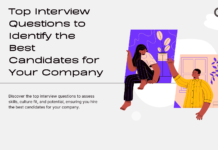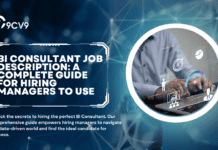Key Takeaways
- Discover the leading complaint management software of 2025 tailored for efficient customer service and multi-channel support.
- Compare top platforms based on features, pricing, scalability, and AI-powered automation tools.
- Learn how modern solutions improve resolution times, boost customer satisfaction, and streamline complaint workflows.
In today’s digitally driven and hyper-competitive marketplace, customer satisfaction is not just a benchmark—it’s a business imperative. Whether you operate in e-commerce, banking, telecommunications, healthcare, or government services, how you handle customer complaints can make or break your brand reputation. Consumers in 2025 are more informed, connected, and vocal than ever before. With social media platforms and online review sites amplifying every customer experience, companies must act quickly and intelligently to resolve issues and maintain trust. This is where complaint management software plays a critical role.

Complaint management software is a specialized digital solution designed to capture, track, manage, and resolve customer complaints in a structured and efficient manner. It streamlines the entire grievance lifecycle—from initial complaint logging to investigation, response, resolution, and follow-up—ensuring no issue falls through the cracks. But the importance of such tools goes far beyond just handling customer grievances. Modern complaint management systems empower organizations to analyze complaint trends, uncover root causes, ensure compliance with regulatory standards, and ultimately enhance customer satisfaction and loyalty.
The demand for complaint management software has grown exponentially in 2025, driven by the need for businesses to maintain accountability, transparency, and efficiency in customer service operations. Enterprises now seek intelligent platforms that offer omnichannel support, AI-driven automation, robust reporting, seamless integration with CRM systems, and adherence to industry regulations like GDPR, HIPAA, ISO 10002, or PCI DSS, depending on the sector. As organizations across the globe digitize their customer experience frameworks, selecting the right complaint management solution becomes a strategic necessity.
However, with a saturated market of tools offering varying levels of features, integrations, scalability, and pricing models, choosing the best complaint management software can be overwhelming. Some platforms excel in regulatory compliance for industries like finance and healthcare, while others shine in automation and self-service features ideal for tech startups and retail businesses. Some prioritize user-friendly dashboards and real-time analytics, while others focus on workflow customization and SLA monitoring. Each solution comes with its own strengths and ideal use cases.
That’s why we’ve done the hard work for you. In this comprehensive guide, we’ll explore the top 10 best complaint management software platforms in 2025, thoroughly analyzing their key features, pros and cons, pricing structures, target industries, and user feedback. Whether you’re a small business looking for a scalable cloud-based tool or a large enterprise in need of a powerful, compliance-focused complaint resolution engine, this list is designed to help you make an informed decision that aligns with your operational needs and customer experience goals.
By the end of this article, you’ll not only have a clear understanding of what makes complaint management software effective in 2025 but also be equipped with the insights necessary to select the solution that can transform your complaint handling process into a strategic asset. Let’s dive into the best options available this year.
Before we venture further into this article, we would like to share who we are and what we do.
About 9cv9
9cv9 is a business tech startup based in Singapore and Asia, with a strong presence all over the world.
With over nine years of startup and business experience, and being highly involved in connecting with thousands of companies and startups, the 9cv9 team has listed some important learning points in this overview of the Top 10 Best Complaint Management Software in 2025.
If your company needs recruitment and headhunting services to hire top-quality employees, you can use 9cv9 headhunting and recruitment services to hire top talents and candidates. Find out more here, or send over an email to [email protected].
Or just post 1 free job posting here at 9cv9 Hiring Portal in under 10 minutes.
Top 10 Best Complaint Management Software in 2025
- Salesforce Service Cloud
- Zendesk Service Desk
- Freshdesk
- Zoho Desk
- Jira Service Management
- HappyFox
- LiveAgent
- Qualtrics XM
- Sprinklr Service
- Issuetrak
1. Salesforce Service Cloud

Salesforce Service Cloud remains one of the most sophisticated and widely adopted complaint management solutions available in 2025. Built atop the robust Salesforce CRM architecture, it is engineered to streamline and optimize customer service operations, complaint resolution workflows, and omnichannel engagement. It is particularly favored by large enterprises and highly regulated sectors requiring intelligent automation, scalability, and deep analytics.
Core Functional Capabilities
Salesforce Service Cloud brings together a suite of intelligent tools and enterprise-grade modules designed to enhance agent productivity, accelerate issue resolution, and improve customer satisfaction.
- Salesforce Lightning Console
A unified interface enabling agents to manage all customer interactions and service data in one place. - AI-Powered Omni-Channel Case Routing
Uses intelligent rules and machine learning to automatically assign customer complaints to the most qualified agents across channels—email, chat, phone, SMS, and social media. - Advanced Case Management System
Centralizes customer complaints and service requests, enabling complete case lifecycle tracking and escalation management. - Enterprise Knowledge Repository
A searchable, AI-enhanced internal knowledge base that empowers agents with instant access to approved resolutions, documentation, and customer histories. - Einstein AI Integration
Provides predictive suggestions, automated responses, sentiment analysis, and smart case classification to boost resolution speed and accuracy. - Cloud Telephony & VoIP Integration
Seamlessly integrates with leading telephony systems to facilitate click-to-call, call recording, and voice analytics. - Global Self-Service Customer Portals
Enables customers to raise, monitor, and resolve complaints independently, reducing the burden on service agents. - Custom Reports and Interactive Dashboards
Offers real-time insights into KPIs like CSAT, first-call resolution (FCR), complaint resolution time, and agent productivity.
Pricing Structure in 2025
Salesforce Service Cloud offers a tiered subscription model suitable for businesses of varying sizes and complexity levels. All plans are billed annually.
| Edition | Monthly Price (Per User) | Key Features |
|---|---|---|
| Starter Suite | $25 | Basic ticketing, task management |
| Pro Suite | $80 | Adds telephony, dashboards, SLA tracking |
| Enterprise Edition | $165 | Advanced case management, workflows, automation |
| Unlimited Edition | $330 | Full CRM suite, advanced analytics, priority support |
| Einstein 1 Service Edition | $500 | AI-first solution with predictive insights, automation, and full Salesforce AI |
| AI Service Cloud Starter Pack | From $360,000/year | Enterprise AI transformation pack tailored for large organizations |
Note: Salesforce Sales Cloud and Service Cloud licenses are sold separately. Customization, integrations, and advanced features may incur additional costs.
Market Adoption & Performance Metrics
Salesforce Service Cloud has been widely recognized for its measurable impact across industries. Its strong market presence and analytical performance indicators make it a dominant player in the complaint management software landscape.
- User Base: Over 150,000 global businesses utilize the platform in 2025.
- Market Share: Holds an estimated 7.41% share in the global complaint management software industry.
- Average Ratings Across Platforms:
- G2: 4.4/5 (5,622 reviews)
- TrustRadius: 8.6/10 (403 reviews)
- Capterra: 4.6/5 (Aggregate)
- CSAT Impact Metrics:
- 40% reduction in average response time
- 30% decrease in total inbound complaint volume
- 25–35% improvement in first-contact resolution rates
- 50% reduction in patient wait times (Healthcare sector case study)
- 45% acceleration in complaint resolution (Financial services)
- 60% improvement in SLA compliance (Mid-market tech firm)
Advantages and Limitations
Key Strengths
- Deep CRM Integration with Salesforce ecosystem
- Enterprise-grade scalability and customizability
- Robust AI capabilities through Einstein AI
- Highly adaptable for industries with complex regulatory requirements
- Supports multilingual, global complaint portals
- Powerful real-time analytics and agent performance insights
Potential Limitations
- High cost of ownership, especially at enterprise tiers
- Steep learning curve for new users and administrators
- Advanced features often require add-ons or third-party integrations
- Configuration and deployment may necessitate certified Salesforce consultants
Ideal Use Cases in 2025
Salesforce Service Cloud is best suited for:
- Large Enterprises: Needing centralized complaint tracking across regions and departments.
- Highly Regulated Industries: Such as finance, healthcare, and telecommunications.
- Organizations with Complex Workflows: Where automation, escalation rules, and SLA enforcement are critical.
- Businesses Using Salesforce CRM: To fully capitalize on seamless data integration and customer intelligence.
Conclusion: A Leading Choice for Intelligent Complaint Resolution
In the 2025 landscape of digital customer service, Salesforce Service Cloud continues to set the gold standard for complaint management software. With its AI-first infrastructure, robust reporting, and comprehensive omnichannel capabilities, it empowers enterprises to not only respond to complaints more efficiently but also to proactively enhance customer experiences. Despite its premium pricing, the return on investment—particularly in metrics such as CSAT, FCR, and resolution time—makes it a strategic asset for organizations prioritizing customer trust and operational excellence.
2. Zendesk Service Desk

In 2025, Zendesk Service Desk emerges as one of the most versatile, scalable, and intelligent platforms for managing customer complaints and support operations. Designed to empower businesses of all sizes with seamless communication, smart automation, and insightful analytics, Zendesk distinguishes itself with a balanced blend of usability and enterprise-level functionality. It is particularly effective for organizations seeking omnichannel engagement, proactive complaint tracking, and continuous service improvement through integrated feedback loops.
Core Capabilities and Functional Highlights
Zendesk is built to facilitate efficient customer complaint resolution while minimizing service friction and boosting agent productivity. Its AI-powered features and customizable architecture make it ideal for businesses seeking proactive service delivery and insightful complaint analytics.
Omnichannel Communication and Ticketing
- Integrates email, web chat, SMS, voice, and social media into a centralized complaint management environment.
- Unified inbox allows agents to switch seamlessly between channels without losing context or customer history.
AI-Powered Virtual Agents and Automation
- AI agents analyze customer intent, sentiment, and language patterns, enabling auto-responses and smart ticket routing.
- Automated workflows for escalation, prioritization, and case categorization ensure faster and more accurate resolution.
Customizable Workflows and Escalation Policies
- Enables configuration of tailored service-level agreements (SLAs), auto-escalation rules, and agent workflows to match organizational needs.
Integrated Surveys and Feedback Mechanisms
- Built-in CSAT, CES, and NPS survey tools help gather actionable feedback post-resolution for continuous service optimization.
Advanced Reporting and Analytics
- Comprehensive dashboard for real-time performance tracking.
- Key metrics include average resolution time, ticket deflection rate, agent efficiency, and customer satisfaction scores.
Ecosystem Integrations
- Natively integrates with popular tools including Salesforce, Slack, Shopify, Jira, and over 1,200 third-party applications via Zendesk Marketplace.
Pricing Structure in 2025
Zendesk offers a variety of pricing tiers, addressing both small business needs and large enterprise demands. Pricing is subscription-based and billed monthly per agent, with annual contracts offering discounts.
| Plan Name | Monthly Price (Per Agent) | Key Features |
|---|---|---|
| Support Team | $19 | Basic complaint management with limited automation |
| Suite Team | $55 | Multichannel support, ticketing, customer portal |
| Suite Growth | $89 | Automation, reporting tools, SLA workflows |
| Suite Professional | $115 | Advanced analytics, multilingual support, AI-enhanced case routing |
| Suite Enterprise | Custom Pricing | Enterprise-grade AI, high-security features, workforce management integration |
Add-ons Available Separately:
- Zendesk AI and Bot Enhancements
- Workforce Management and Forecasting Tools
- Data Privacy & Compliance Modules
- Quality Assurance Automation
Free trials are available for most plans, and discounts are typically provided for high-volume user licenses.
Market Presence and Performance Metrics
Zendesk maintains a commanding position in the complaint management software landscape, underpinned by strong global adoption, user satisfaction, and measurable ROI across sectors.
Global Reach and Customer Base
- Over 200,000 paid customer accounts as of 2025.
- Services clients in 160+ countries, across industries such as retail, SaaS, financial services, and public administration.
Customer Satisfaction and Platform Ratings
- G2: 4.3/5 (5,800+ reviews)
- TrustRadius: 8.6/10
- Capterra: 4.5/5 (aggregate across customer support categories)
- Zendesk internal Employee Satisfaction Score (ESAT): 98%, indicating robust support and team alignment.
Quantifiable Benefits from Case Studies
| Metric | Reported Impact |
|---|---|
| Return on Investment (ROI) | Up to 369% (e.g., Lush Cosmetics) |
| Increase in Case Handling Capacity | 35% |
| Productivity Gain | 33% |
| Reduction in Ticket Volume | 70% |
| Improvement in First-Response Accuracy | 32% |
| Decline in Average Resolution Time | 28% |
Key Advantages and Potential Challenges
Strengths
- Highly scalable across SMBs and enterprise environments
- Powerful AI tools for complaint classification, sentiment analysis, and auto-resolution
- Rich integration ecosystem via the Zendesk Marketplace
- User-friendly interface, minimal training required
- Real-time data visualization and performance tracking
- Proven track record across a wide variety of global organizations
Limitations
- Steeper learning curve for complex configurations
- Higher-tier plans and AI add-ons can become cost-intensive
- Occasional system maintenance windows may affect uptime for brief periods
Ideal Use Cases in 2025
Zendesk is especially effective for organizations with:
- High customer interaction volumes across multiple digital channels.
- A need for real-time complaint resolution analytics and SLA enforcement.
- Desire to leverage AI-powered automation for faster, more efficient support.
- An existing stack of third-party tools requiring easy integration with the help desk.
Conclusion: A Versatile Powerhouse for Modern Complaint Management
Zendesk Service Desk continues to prove itself in 2025 as an indispensable solution for organizations aiming to modernize their complaint handling systems. With its blend of omnichannel support, AI-enhanced capabilities, and deep customization, Zendesk empowers businesses to not only respond to complaints efficiently but to convert them into opportunities for customer loyalty and operational improvement. Its strong market position and impressive ROI metrics make it a reliable choice for both emerging companies and global enterprises alike.
3. Freshdesk

Freshdesk, a flagship product from Freshworks Inc., continues to be a top-tier contender in the complaint management software landscape in 2025. Built as a flexible, cloud-native platform, Freshdesk caters to organizations of all sizes—from early-stage startups to enterprise-scale support teams—by delivering robust complaint resolution features wrapped in a user-friendly interface.
With a strong emphasis on automation, collaboration, and omnichannel communication, Freshdesk empowers support teams to respond to customer complaints with increased accuracy and agility. Its rapid deployment, scalable architecture, and affordable pricing models make it particularly appealing to small and medium businesses while still supporting complex enterprise needs.
Key Functional Capabilities and Software Features
Freshdesk is designed to transform reactive customer service into a proactive support operation through the following feature-rich toolkit:
AI-Driven Complaint Routing and Prioritization
- Leverages artificial intelligence to automatically assign tickets to the most suitable agents.
- Prioritizes complaints based on urgency, channel, and customer history, ensuring timely escalation of high-impact issues.
Collaborative Resolution Tools
- Allows internal notes, ticket sharing, and shared ownership to streamline team-based problem-solving.
- Features such as Agent Collision Detection prevent duplication of efforts and enhance efficiency.
Multi-Channel and Multilingual Support
- Integrates customer interactions across email, chat, phone, social media, and web forms into a single ticketing view.
- Offers multi-language support and time zone customization to support global operations.
Self-Service Portals and Knowledge Base
- Includes a customizable self-service portal that reduces ticket volume by empowering customers to find answers independently.
- Intelligent search and FAQs deliver relevant content using past interaction data.
Mobile Agent Support
- Full-featured mobile app enables agents to view, respond to, and manage tickets on the go, ensuring continuity and responsiveness outside traditional work settings.
Customization and Branding Flexibility
- Allows detailed customization of portals, workflows, and agent interfaces to align with brand identity and operational models.
Pricing Structure of Freshdesk in 2025
Freshdesk maintains a highly competitive pricing strategy, with plans suitable for startups and growing enterprises. Pricing is based on annual billing per agent, offering substantial value for the features provided.
| Plan Name | Monthly Price (Per Agent) | Key Features |
|---|---|---|
| Free Plan | $0 | Basic email ticketing, knowledge base, team collaboration for up to 2 agents |
| Growth | $15 | Automation, collision detection, custom ticket views |
| Pro | $49 | Round-robin routing, SLA management, multilingual support |
| Enterprise | $79 | Skill-based routing, audit logs, sandboxing, IP whitelisting |
| Omnichannel Plans | Custom Pricing | Unified view across Freshdesk, Freshchat, and Freshcaller (phone/chat/email) |
Discounts apply with annual billing. Additional costs may arise from add-ons such as bots, analytics, or integrations with premium tools.
Customer Adoption, Performance Outcomes, and User Ratings
Freshdesk has demonstrated consistent growth in user adoption and satisfaction, establishing itself as a reliable solution for customer complaint management across various sectors.
Global User Base and Reach
- Trusted by over 72,000 businesses across the globe.
- More than 42,000 companies actively use the platform in 2025.
User Ratings on Leading Review Sites
- G2: 4.4/5 (Based on 3,100+ reviews)
- TrustRadius: 8.6/10
- Capterra: 4.35/5
Impactful Case Study Results
| Metric | Reported Benefit (Example: Crocus) |
|---|---|
| First Response Time Reduction | 91% improvement |
| Customer Satisfaction Score (CSAT) | Achieved 85% |
| Cost Reduction in Customer Support | 30% decrease in support expenses |
Strengths and Limitations of Freshdesk
Competitive Advantages
- Highly intuitive interface with minimal training requirements.
- Affordability, especially for startups and smaller teams via the free plan.
- Rapid deployment and quick time-to-value.
- Comprehensive omnichannel ticketing support.
- Scalability to match business growth without significant restructuring.
Potential Drawbacks
- Feature limitations in the Free and Growth plans; advanced automation and analytics require higher-tier subscriptions.
- Offline limitations, particularly in areas with unreliable internet access.
- Some users report occasional performance lags with complex workflows or heavy concurrent sessions.
Ideal Use Cases for Freshdesk in 2025
Freshdesk is ideally suited for:
- Startups and small to medium businesses looking for a scalable, cost-effective helpdesk.
- Teams managing customer queries across multiple communication channels.
- Organizations seeking AI-enhanced automation without the overhead of enterprise-scale platforms.
- Companies wanting to launch quickly with limited internal IT resources.
Conclusion: Freshdesk as a Balanced and Adaptive Complaint Management Platform
In the ever-evolving landscape of digital customer experience, Freshdesk stands out in 2025 as a highly accessible yet powerful complaint management system. Its intuitive interface, feature-rich architecture, and AI-augmented automation strike the right balance between functionality and affordability. From enhancing support workflows to reducing operational costs, Freshdesk offers measurable value for businesses committed to improving customer satisfaction through streamlined complaint resolution. Its popularity among fast-scaling companies and tech-savvy startups underscores its relevance and dependability in modern service environments.
4. Zoho Desk

Zoho Desk, developed by Zoho Corporation, remains a prominent force in the global complaint management software market in 2025. Designed as a cloud-native customer service solution, Zoho Desk enables organizations to efficiently manage and resolve customer complaints through an intuitive, multichannel support interface. It distinguishes itself through tight integration with the Zoho ecosystem, a strong focus on AI-driven insights, and a highly cost-effective pricing model that appeals to businesses of all sizes.
Built for scalability, Zoho Desk is especially well-suited for organizations that prioritize contextual support, real-time collaboration, and customizable workflows—while also benefitting from its automation capabilities and seamless connectivity with both Zoho and third-party applications.
Key Features and Functional Advantages
Zoho Desk delivers a feature-rich environment focused on enhancing customer satisfaction through rapid and informed complaint resolution.
Context-Aware Ticket Management
- Enables agents to respond with personalized context by displaying customer history, previous tickets, and preferences alongside each complaint.
- Ensures faster and more accurate resolution, reducing back-and-forth communication.
Multichannel Ticketing Ecosystem
- Consolidates customer inquiries from email, phone, live chat, social media, and web forms into a centralized dashboard.
- Ensures no complaint is missed or duplicated, streamlining ticket tracking and categorization.
AI Assistant Zia
- Zia, the AI-powered assistant, performs sentiment analysis, identifies anomalies in ticket trends, and predicts ticket resolution times.
- Suggests relevant knowledge base articles and automates ticket tagging based on intent.
Self-Service Capabilities
- Offers a fully customizable self-service portal equipped with an AI-powered knowledge base, community forums, and FAQs.
- Reduces ticket volume by allowing customers to find answers independently.
Automation and SLA Management
- Facilitates the automation of repetitive tasks, including ticket routing, prioritization, and follow-ups.
- Supports Service Level Agreement (SLA) monitoring and automatic escalation paths for high-priority issues.
Omnichannel Dashboard and Workflow Customization
- Agents can manage all communication channels via a single pane of glass.
- Admins can create custom workflows, macros, and blueprints to tailor support operations to specific business needs.
Zoho Desk Pricing Plans in 2025
Zoho Desk is widely regarded for its affordable pricing, which scales smoothly from startups to large enterprises. The pricing structure is based on annual billing per agent.
| Plan | Monthly Price per Agent | Core Inclusions |
|---|---|---|
| Free | $0 | Email ticketing, help center, basic reports for up to 3 agents |
| Standard | $14 | Workflow automation, SLAs, and customer happiness ratings |
| Professional | $23 | Multichannel support (email, phone, chat, social), time tracking, and team dashboards |
| Enterprise | $40 | AI assistant (Zia), custom functions, multi-department support |
| Ultimate | $52 | Advanced analytics with Zoho Analytics, Sandbox, and extensive integrations |
Annual billing unlocks additional discounts. Add-ons are available for telephony, live chat, and advanced analytics.
Market Adoption, Customer Impact, and User Reviews
Zoho Desk is widely adopted across diverse industries, offering measurable returns on customer service performance. Its ability to blend contextual intelligence with scalable features contributes to its growing popularity.
Global Presence and User Base
- Trusted by over 100,000 companies globally.
- Part of the larger Zoho suite, which serves more than 75 million users worldwide.
Customer Satisfaction Ratings
- G2: 4.4/5 (based on 5,600+ reviews)
- TrustRadius: 8.3/10
- Capterra: 4.4/5
Documented Performance Benefits
| Organization | Reported Outcome |
|---|---|
| Strata | Achieved a 50% reduction in average complaint resolution time |
| DSB Bank | Reported a 50% productivity increase in support operations |
| LambdaTest | Noted a significant decrease in response times |
Strengths and Potential Limitations
Key Advantages
- Contextual ticketing improves agent performance and customer personalization.
- Deep integration with the Zoho ecosystem, enhancing cross-functional workflows.
- Affordable pricing tiers with enterprise-grade features.
- AI-driven insights via Zia, improving efficiency and automation.
- Multi-language and multi-department support, making it suitable for global enterprises.
Known Challenges
- Customization options, while available, may feel restrictive for highly specialized use cases.
- Initial setup can be complex for users unfamiliar with Zoho’s broader platform structure.
- Some third-party integrations may require additional configuration or middleware.
Zoho Desk: Ideal Use Cases for 2025
Zoho Desk is a compelling solution for:
- SMBs and mid-sized enterprises looking for a scalable support platform with robust features at low cost.
- Companies that already rely on Zoho CRM, Zoho Analytics, or Zoho SalesIQ.
- Organizations that emphasize contextual customer support and AI-enhanced complaint resolution.
- Teams in multi-lingual or multi-regional environments needing localized support features.
Conclusion: Zoho Desk as a Feature-Rich, Economical Complaint Management Leader
In 2025, Zoho Desk continues to assert its position as a versatile and intelligent complaint management software, offering a broad feature set at a competitive price point. Its deep AI integration, contextual support capabilities, and tight ecosystem alignment with Zoho apps make it especially attractive to businesses seeking long-term scalability without exorbitant licensing costs.
With solid user satisfaction scores and proven ROI through case studies, Zoho Desk remains a preferred choice for forward-thinking companies striving to elevate their customer support operations in a dynamic business environment.
5. Jira Service Management

Jira Service Management, developed by Atlassian, stands as one of the most sophisticated and adaptable platforms in the 2025 complaint management software landscape. Positioned as a comprehensive IT service management (ITSM) solution, Jira Service Management is engineered for organizations seeking to unify support, development, and operations within a single, agile framework.
The platform is especially effective for technical teams, including DevOps and IT support, that require deep visibility into service requests, incident handling, and change tracking—while aligning service delivery with agile principles. Jira’s native integration with the Atlassian ecosystem (including Jira Software, Confluence, and Bitbucket) further enhances collaboration across departments.
Core Features and Functional Excellence
Jira Service Management offers a diverse suite of features designed to enhance productivity, automate service workflows, and improve complaint resolution outcomes across enterprise environments.
Advanced Service Request Management
- Enables structured intake and triage of customer complaints and internal service requests.
- Tickets can be routed automatically based on predefined logic or escalated based on SLA policies.
ITIL-Compliant Capabilities
- Fully supports incident, problem, change, and asset management, adhering to modern ITIL frameworks.
- Facilitates root cause analysis and proactive problem prevention through built-in tools.
Service Level Agreement (SLA) Monitoring
- Allows granular configuration of SLAs for different customer types and issue priorities.
- Triggers automated alerts, escalations, and timers to maintain service quality.
Comprehensive Asset & Configuration Management
- Integrated CMDB (Configuration Management Database) to track IT assets and their interdependencies.
- Ideal for organizations seeking visibility into both physical and digital infrastructure.
Built-In Automation and AI-Driven Analytics
- Automates repetitive tasks such as ticket assignment and change approvals.
- Offers real-time dashboards and advanced reporting to analyze response trends and workload distribution.
Seamless Atlassian Integration
- Native compatibility with Jira Software, Confluence, Bitbucket, and Opsgenie.
- Encourages cross-functional collaboration between support and engineering teams.
Pricing Structure of Jira Service Management (2025)
Jira Service Management provides flexible pricing tailored for businesses at different maturity stages. The solution is billed per agent, with options for monthly and annual subscriptions.
| Plan | Monthly Price (Per Agent) | Key Inclusions |
|---|---|---|
| Free | $0 | Basic ticketing system for up to 3 agents |
| Standard | $20 | SLA metrics, incident management, and self-service portal |
| Premium | $40 | Advanced automation, asset management, and 24/7 support |
| Enterprise | Custom Pricing | Enterprise-grade security, compliance, and global scale infrastructure |
Pricing may vary based on data residency, number of agents, and add-on modules. Annual billing provides discounts.
Market Penetration, Industry Impact, and User Ratings
Jira Service Management has become a cornerstone for IT service operations, particularly in sectors requiring integrated complaint tracking, IT incident handling, and development pipeline alignment.
Adoption Statistics and Reach
- Deployed by over 55,000 businesses globally.
- Widely adopted in technology, finance, healthcare, and SaaS sectors.
Customer Satisfaction and Review Ratings
| Platform | Rating | Total Reviews |
|---|---|---|
| G2 | 4.2/5 | 1,300+ |
| TrustRadius | 8.4/10 | 400+ |
| Capterra | 4.0/5 | 1,000+ |
Proven Business Outcomes
| Metric | Reported Value |
|---|---|
| Time Saved by IT Teams Monthly | 115 hours |
| 3-Year ROI | 277% |
| Savings from Replacing Traditional ITSM Tools | $2.0 million |
| Service Desk Productivity Gains | $1.4 million |
Advantages and Limitations
Key Strengths
- Highly customizable workflows tailored for IT, DevOps, and customer support functions.
- End-to-end visibility across the complaint lifecycle, from intake to resolution.
- Deep integration with Atlassian’s ecosystem, facilitating collaborative triaging and resolution.
- Enterprise-grade scalability, capable of supporting global teams with advanced security controls.
Potential Drawbacks
- Steep learning curve, particularly for non-technical users or those unfamiliar with Jira’s interface.
- Complex setup and configuration may require onboarding support or consultation.
- Limited native integration with non-Atlassian products, often requiring third-party connectors.
Best-Fit Use Cases in 2025
Jira Service Management is ideally suited for:
- IT departments and DevOps teams in need of agile, ITIL-compliant service desk capabilities.
- Organizations already using Atlassian products for development, project management, or documentation.
- Mid-to-large enterprises with complex complaint management workflows and SLA obligations.
- Teams looking to consolidate incident, problem, and change management under one platform.
Conclusion: Jira Service Management as a Strategic ITSM and Complaint Resolution Platform
As of 2025, Jira Service Management stands out as a technically advanced, highly scalable complaint management platform, optimized for enterprises operating in high-complexity environments. Its ability to align IT operations with service support, leverage automation, and deliver substantial productivity gains makes it a top-tier solution—particularly for organizations embedded in the Atlassian ecosystem.
Its strong ROI, integration depth, and high configurability position it as a future-forward tool for businesses seeking to modernize their approach to complaint resolution, ITSM, and customer satisfaction.
6. HappyFox

In 2025, HappyFox continues to rank as a prominent cloud-based helpdesk and complaint management software, especially favored by mid-sized to large organizations aiming to streamline complaint resolution workflows through automation and analytics. Designed as a comprehensive SaaS ticketing solution, HappyFox excels at consolidating customer interactions from various communication channels into a centralized, actionable dashboard.
The platform’s strength lies in its intelligent ticketing system, dynamic workflow automation, and contextual analytics, which together enable faster resolution times and improved agent performance. It is used across industries including retail, education, logistics, and professional services by businesses operating in over 70 countries.
Key Features and Functional Capabilities
HappyFox offers a robust suite of tools tailored to modern customer service teams seeking a unified complaint management platform with strong automation and reporting capabilities.
Intelligent Ticket Management
- Allows complaint tickets to be categorized by priority, tags, status, and assigned agent.
- Offers a centralized ticket dashboard that enhances visibility across channels and departments.
Omnichannel Support System
- Consolidates complaints from email, web forms, voice calls, live chat, and social media into one unified platform.
- Ensures seamless communication history tracking and context-based agent responses.
Workflow Automation
- Automates routine support tasks such as ticket assignments, escalations, and follow-ups.
- Reduces manual errors and increases agent bandwidth for high-impact issues.
Reporting & Analytics
- Provides real-time, data-driven insights into ticket volume, resolution times, agent performance, and CSAT trends.
- Custom dashboards allow managers to monitor SLA compliance and optimize resource allocation.
Customization and Self-Service Tools
- Offers customizable support forms, ticket fields, and branding options.
- Self-service portals equipped with a knowledge base and FAQ builder to reduce ticket volume.
HappyFox Pricing Overview (2025)
HappyFox adopts a flexible pricing model to accommodate businesses of varying sizes, offering both per-agent and unlimited agent plans. All plans are billed monthly and include a free trial.
| Plan Name | Price (Per Agent/Month) | Core Features |
|---|---|---|
| Basic | $24 | Essential ticketing, basic automation, email and form support |
| Team | $49 | Team collaboration, time tracking, SLA management |
| Pro | $99 | Advanced reporting, custom roles, branding, live chat integration |
| Enterprise PRO | Custom Pricing | Custom integrations, dedicated support, enterprise SLAs |
| Unlimited Agents Plan | Starting at $1,999/month | Scalable solution for high-volume teams across departments |
Note: Pricing may vary depending on required integrations, support level, and data retention options.
Global Reach, User Ratings, and Real-World Impact
HappyFox has made significant inroads globally by emphasizing ease of use, automation, and visibility in complaint resolution. Its footprint spans over 12,000 companies across 70+ countries, including both B2B and B2C enterprises.
User Ratings from Trusted Platforms
| Review Platform | Rating | Total Reviews |
|---|---|---|
| G2 | 4.5/5 | 500+ |
| TrustRadius | 7.5/10 | 100+ |
| Capterra | 4.6/5 | 300+ |
Key Performance Metrics
| Metric | Impact |
|---|---|
| Automated Ticket Resolution Rate Increase | +40% |
| Agent Productivity Improvement | +30% |
| First Response Time Reduction (Reported Case) | ~35% faster on average |
These statistics are drawn from verified customer case studies and internal analytics published by HappyFox.
Advantages and Limitations
Strengths
- User-Friendly Interface: Simple navigation and minimal training requirements for agents and admins.
- Robust Automation Engine: Powerful workflow rules reduce manual intervention and speed up processes.
- Comprehensive Reporting Tools: Actionable insights with customizable dashboards and SLA monitoring.
- Omnichannel Efficiency: Excellent integration across major communication platforms.
- Free Trial Access: Businesses can evaluate core features before committing.
Weaknesses
- Pricing Considerations: Premium features and unlimited agent plans may be cost-prohibitive for startups or small teams.
- Lack of Built-in IT Asset Management: Not suitable for IT departments that require infrastructure tracking.
- Initial Setup Complexity: Custom workflows and integrations may require technical expertise or onboarding support.
Ideal Use Cases in 2025
HappyFox is best suited for:
- Customer support teams handling complaints across multiple communication platforms.
- Mid-to-large enterprises seeking automation and reporting to scale customer service.
- Businesses requiring multi-brand or department-specific complaint portals.
- Organizations prioritizing quick resolution times and agent productivity optimization.
Conclusion: HappyFox as a Streamlined, Insight-Driven Complaint Management Solution
In the evolving 2025 service landscape, HappyFox has established itself as a powerful, automation-first complaint management software. By emphasizing real-time analytics, omnichannel integration, and intelligent workflow design, it enables businesses to respond to customer grievances swiftly and efficiently.
Its intuitive interface, coupled with advanced customization and scalable pricing, makes it an attractive solution for organizations seeking agility and insight in complaint resolution—particularly those aiming to automate high volumes of support tickets while maintaining a human-centric experience.
7. LiveAgent

LiveAgent stands out in 2025 as one of the most feature-rich and real-time focused complaint management and helpdesk software platforms. Known for its ultra-fast live chat widget and extensive integration capabilities, it is engineered to support customer service teams in resolving complaints across multiple channels in real-time. With a client base spanning over 40,000 global businesses and 150 million end-users, LiveAgent is trusted for its reliability, scalability, and support excellence.
It provides a universal inbox, a built-in call center, live chat, and a powerful customer portal, making it a preferred choice for businesses seeking holistic, omnichannel complaint resolution workflows. LiveAgent’s robust automation tools and wide range of integrations further extend its operational capabilities.
Key Functionalities of LiveAgent in 2025
Omnichannel Complaint Capture
- Centralizes communication across email, live chat, call center, Facebook, Twitter, Instagram, and WhatsApp.
- A universal inbox unifies all incoming interactions into a single dashboard for seamless complaint tracking.
Fastest Live Chat Widget in the Industry
- The real-time chat widget loads in under 2.5 seconds, significantly reducing customer wait times.
- Includes features such as chat routing, proactive invitations, and agent typing previews.
Built-in Call Center Capabilities
- Offers a fully integrated VoIP call center, enabling teams to handle phone complaints directly within the helpdesk.
- Includes IVR, call routing, transfers, and call recording.
Automation and Customization Tools
- Includes advanced ticket routing, SLA rules, macros, and custom workflows.
- Users can configure tags, priorities, and escalation paths for complaints based on business logic.
Extensive Integration Ecosystem
- Supports over 195 integrations with tools like Slack, Salesforce, Shopify, Mailchimp, Zapier, and more.
- Offers a public API for custom application extensions.
LiveAgent Pricing Plans (2025)
LiveAgent provides flexible and scalable pricing options, including a free version and four premium tiers suited for businesses of varying complexity.
| Plan | Price (Billed Annually Per Agent) | Key Features |
|---|---|---|
| Free | $0 | Basic ticketing, 7-day ticket history, limited integrations |
| Small | $15/month | Unlimited ticket history, email support, basic automation |
| Medium | $29/month | Live chat support, time tracking, performance reporting |
| Large | $49/month | Call center, social media channels, advanced SLA settings |
| Enterprise | $69/month | IP restrictions, audit logs, priority support, white-label customization |
All paid plans offer a 30-day free trial. Monthly billing is also available at a slightly higher cost.
LiveAgent Usage Statistics and Customer Ratings
LiveAgent has been widely adopted across industries such as e-commerce, SaaS, education, and telecommunications. It continues to gain high satisfaction scores from independent review platforms in 2025.
Platform Ratings
| Review Platform | Rating | Review Volume |
|---|---|---|
| G2 | 4.5/5 | 2,000+ reviews |
| Gartner Peer Insights | 4.8/5 | 500+ verified users |
| TrustRadius | 8.9/10 | 200+ detailed reviews |
| Research.com | 4.5/5 | 1,000+ reviews |
Adoption Highlights
- Trusted by over 40,000 companies globally.
- More than 150 million users supported across all regions.
- Average implementation time: 7–10 days, depending on configuration needs.
Advantages and Limitations
Key Benefits
- Fast Deployment and Performance: The live chat system is among the fastest in the industry.
- Comprehensive Omnichannel Support: Covers a wide spectrum of digital channels in one platform.
- Robust Automation & Customization: Enables complex workflows and response routing.
- Wide Integration Coverage: Easily connects with leading CRMs, e-commerce, and marketing tools.
- Scalable Pricing: Free and affordable plans make it accessible to businesses of all sizes.
Notable Limitations
- Complex Onboarding: Initial setup can be intricate without technical support, especially with deep integrations.
- Limited AI Capabilities: Lacks native advanced AI features like predictive analytics or AI chatbots available in some competitors.
- Cluttered Interface at Scale: Ticket management can become less intuitive with very high volumes unless custom workflows are applied.
LiveAgent in 2025: Best Use Cases
LiveAgent is ideally suited for:
- Customer service teams that require real-time, omnichannel engagement.
- Mid-sized enterprises and startups seeking an affordable yet comprehensive ticketing solution.
- E-commerce and SaaS platforms with high-volume support inquiries across multiple channels.
- Organizations with global reach needing multilingual and multichannel support.
Conclusion: Why LiveAgent is a Leading Choice for Complaint Management in 2025
As digital customer expectations evolve, LiveAgent stands tall among the top complaint management systems in 2025 by delivering speed, flexibility, and full-spectrum communication capabilities. With its unmatched live chat performance, unified complaint dashboard, and rich automation suite, it empowers businesses to resolve customer grievances more efficiently, while optimizing agent productivity.
While it may not yet lead in AI innovation, its deep customization, global reach, and cost-effective plans make LiveAgent a top-tier solution for businesses prioritizing responsiveness, omnichannel coverage, and scalability in their complaint management infrastructure.
8. Qualtrics XM

Qualtrics XM (Experience Management) stands out in 2025 as a leading enterprise-level platform that blends sophisticated customer complaint tracking, feedback collection, and sentiment analytics into one seamless ecosystem. As organizations place increasing value on customer experience (CX) and actionable insights, Qualtrics XM emerges as a strategic asset for companies that require data-driven complaint management at scale.
Built with a highly customizable interface and powered by real-time analytics, Qualtrics XM enables support teams to capture complaints across multiple channels, analyze them contextually, and derive insights that enhance satisfaction and retention. The platform is widely recognized for its powerful survey logic, natural language processing, and integration with CX performance metrics.
Core Functionalities of Qualtrics XM in 2025
Omnichannel Feedback and Complaint Capture
- Collects customer feedback and complaints from email, chat, SMS, mobile apps, social media, and web portals.
- Utilizes the XM Directory, housing over 4 billion unique customer and employee profiles, for contextualized issue resolution.
Advanced Survey and Form Builder
- Features a drag-and-drop interface with extensive logic options for creating complaint intake forms and surveys.
- Supports over 100 question types, branching logic, embedded data, and personalization tools.
Real-Time Analytics and Sentiment Interpretation
- Uses AI-powered analytics to identify complaint themes, emotion signals, and escalation triggers.
- Dashboards provide real-time updates on Net Promoter Score (NPS), Customer Satisfaction (CSAT), and issue resolution rates.
Customer Journey Mapping
- Visualizes complaint data within the broader context of the customer journey.
- Identifies friction points, recurring complaint trends, and gaps in service delivery.
Integrated Action Planning
- Enables teams to create automated workflows, assign responsibilities, and track resolution metrics using built-in action management tools.
- Includes ticketing escalation, SLA tracking, and recovery workflow configuration.
Qualtrics XM Pricing Overview (2025)
Qualtrics XM adopts a flexible, enterprise-centric pricing model tailored to the client’s usage, industry, and strategic goals. Public pricing is limited due to its customization, but a 30-day trial is available.
| Plan Type | Pricing Model | Key Inclusions |
|---|---|---|
| Free Trial | 30 Days | Full access to core CX tools |
| Research Core Plans | Starting at ~$1,500/year | Survey design, limited analytics, feedback collection tools |
| CX Suite (Enterprise) | Custom, quote-based | Full complaint management, XM Directory access, predictive analytics |
| Strategic Research Suite | Custom, industry-specific pricing | Advanced data modeling, panel management, experimental design capabilities |
Note: Pricing varies depending on the number of users, survey responses, data storage, and add-ons such as SMS feedback or AI analysis modules.
Qualtrics XM Customer Ratings and Global Reach
Qualtrics XM has established itself as a global leader in experience management, particularly among Fortune 500 companies, healthcare systems, financial institutions, and public-sector organizations.
Platform Ratings
| Platform | Rating | Review Count |
|---|---|---|
| G2 | 4.4/5 | 3,200+ reviews |
| Research.com | 4.69/5 | 1,800+ customer evaluations |
| TrustRadius | 8.2/10 | 400+ verified user reviews |
Market Adoption Highlights
- Trusted by over 12,000 enterprise brands worldwide.
- Maintains the world’s largest experience management database (XM Directory) with over 4 billion profiles.
- Reports 76% global satisfaction rate from CX leaders using its complaint management framework.
Pros and Cons of Qualtrics XM for Complaint Management
Strengths
- Enterprise-Ready Architecture: Highly scalable and compliant with industry standards like GDPR and HIPAA.
- AI-Driven Analytics: Real-time interpretation of customer feedback through sentiment analysis and predictive indicators.
- Custom Workflow Automation: Enables personalized complaint handling and escalation mechanisms.
- Comprehensive Data Visualization: Dashboards and heatmaps highlight areas of concern and guide CX improvements.
- Global Support and Localization: Offers multi-language support and region-specific data governance.
Limitations
- Complex Pricing Model: Lacks transparency in pricing; often requires extensive discussions with sales teams for quotes.
- High Learning Curve: May be overwhelming for small teams or organizations with basic complaint resolution needs.
- Enterprise-Centric: Feature set may exceed the requirements of small to mid-sized businesses focused on simple ticketing.
Best Use Cases for Qualtrics XM in 2025
Qualtrics XM is best suited for organizations that:
- Operate at a global or multi-regional level with high volumes of customer feedback.
- Require deep, longitudinal analysis of complaints to improve long-term customer loyalty.
- Are focused on strategic CX transformation rather than just day-to-day issue resolution.
- Manage complex stakeholder relationships, such as in healthcare, banking, education, and government.
Conclusion: Why Qualtrics XM is a Strategic Complaint Management Powerhouse in 2025
In 2025, Qualtrics XM continues to redefine what modern complaint management should look like for enterprises. Far beyond a simple helpdesk tool, it offers a strategic experience management framework powered by AI, customer journey analytics, and omnichannel engagement. For organizations with advanced feedback systems and the need for actionable insights across the full customer lifecycle, Qualtrics XM remains a top-tier solution in the global landscape of complaint management platforms.
9. Sprinklr Service

Sprinklr Service has positioned itself as one of the premier platforms for complaint management in 2025, especially for enterprises that prioritize digital-first customer engagement. Its robust architecture is purpose-built for managing customer complaints across a wide array of digital channels, including email, chat, voice, and most notably, social media—a unique strength that differentiates it from many traditional support systems.
What makes Sprinklr Service stand out is its ability to unify all customer interactions—complaints, inquiries, escalations—into a single AI-enhanced platform. Leveraging advanced AI-powered social listening, intelligent routing, sentiment analysis, and root cause diagnostics, Sprinklr Service helps brands not only resolve complaints quickly but also understand the deeper behavioral patterns behind customer dissatisfaction.
Core Capabilities of Sprinklr Service in 2025
Omnichannel Complaint Capture and Resolution
- Enables end-to-end management of customer complaints from initiation to resolution across:
- Social media (Twitter/X, Facebook, Instagram, LinkedIn, etc.)
- Messaging apps (WhatsApp, Messenger, etc.)
- Email, live chat, SMS, and voice support
- Unified ticketing system that consolidates all complaint threads into a single smart dashboard
AI-Driven Social Listening and Automation
- Monitors customer sentiment across platforms in real time
- Identifies trending issues, escalates high-priority complaints automatically
- Delivers automated responses and proactive alerts to service teams via smart rules
Integrated Root Cause and Workflow Management
- Features intelligent root cause analysis for identifying systemic issues across touchpoints
- Includes workflow automation tools to streamline repetitive complaint-handling tasks
- Supports collaboration across departments, with shared ticketing and case histories
Personalized Dashboards and Analytics
- Offers detailed reporting dashboards for tracking complaint metrics, such as:
- First response time
- Resolution time
- Escalation rate
- CSAT and NPS
- Customizable role-based views for executives, service agents, and quality teams
Sprinklr Service Pricing Structure (2025)
Sprinklr provides a modular and tiered pricing model designed to accommodate both large-scale enterprises and mid-sized organizations. Pricing depends on selected features, seat count, and deployment scale.
| Plan Type | Pricing | Features Included |
|---|---|---|
| Self-Serve Customer Service | $249/seat/month (or $199 annually) | Omnichannel support, AI case routing, core reporting, limited social media channels |
| Advanced Enterprise CCaaS | Custom quote-based pricing | Full AI suite, extensive integrations, social listening, journey analytics |
| Additional Editions | 3 tiers available | Varying levels of channel support, automation, and analytics features |
Custom solutions are typically preferred by Fortune 500 clients and require consultation with Sprinklr’s enterprise team.
Global Adoption and User Feedback
Sprinklr Service has earned a strong reputation for performance in digital customer service transformation across high-demand sectors like retail, telecom, finance, and consumer goods.
Customer Ratings and Satisfaction Metrics
| Platform | Rating | User Feedback Summary |
|---|---|---|
| Research.com | 4.35/5 | High marks for usability and social media tools |
| G2 | 4.3/5 | Praised for scalability and intelligent routing |
| TrustRadius | 8.0/10 | Noted for analytics depth and omnichannel reach |
Enterprise Impact Metrics
- Trusted by over 1,400 global enterprises
- Achieved a Customer Satisfaction Score (CSAT) of 77/100
- Case study highlights include:
- AkzoNobel UK: 80% reduction in customer service response times
- Uber: 33% reduction in first-response time after deployment
Key Advantages and Limitations of Sprinklr Service
Advantages
- Unmatched social media integration: Native connectivity with all major platforms
- AI-powered automation: Smart response generation and routing algorithms reduce resolution time
- Unified platform: Single dashboard view for managing omnichannel interactions
- Advanced analytics: Enables in-depth trend analysis and performance benchmarking
- Global scalability: Supports multilingual teams and multi-region deployment
Limitations
- Session timeouts: Users have reported automatic logouts after periods of inactivity
- Premium cost: Entry-level plans are higher-priced compared to competitors in the same category
- Complex interface: The wealth of features can result in a steeper learning curve for new users
Best Fit Use Cases for Sprinklr Service in 2025
Sprinklr Service is an ideal solution for:
- Large-scale enterprises managing high volumes of social interactions
- Brands that engage heavily on platforms like X (Twitter), Instagram, and WhatsApp
- Organizations focused on proactive, AI-driven customer support
- CX teams requiring centralized analytics for digital channels
- Businesses seeking high-level customization and integrations with marketing or CRM platforms
Conclusion: Sprinklr Service as a Next-Generation Complaint Management Platform
In 2025, Sprinklr Service remains at the forefront of intelligent, social-first complaint management. Its comprehensive omnichannel ecosystem and advanced AI capabilities make it particularly valuable for brands that consider customer experience a strategic priority. For organizations that want to go beyond traditional ticketing systems and adopt a holistic digital engagement strategy, Sprinklr Service offers an unmatched level of depth, insight, and performance.
10. Issuetrak

Issuetrak stands out in 2025 as a dynamic and adaptable complaint management software solution designed to optimize internal workflows and enhance the resolution of both customer-facing and internal complaints. It is especially well-regarded among mid-market and enterprise-level organizations that prioritize flexibility in deployment, extensive customization, and budget-conscious scalability.
By offering both cloud-hosted and on-premises installation options, Issuetrak provides IT teams with significant autonomy over data control, compliance, and infrastructure preferences. Unlike many of its competitors, Issuetrak supports unlimited free end-users across all plans—a strategic advantage for large organizations managing high volumes of service requests.
Key Features and Functionality of Issuetrak in 2025
Comprehensive Complaint and Issue Tracking
- Tracks complaints originating from internal staff, customers, vendors, or third-party partners.
- Offers real-time ticket monitoring, automated escalation paths, and multi-level approval processes.
- Custom forms and issue types allow businesses to adapt the platform to sector-specific needs (e.g., healthcare, manufacturing, education, IT services).
Flexible Deployment Options
- Cloud-based SaaS deployment for organizations that prefer hosted services with automatic updates.
- On-premises hosting for businesses that require local control for security or compliance purposes.
- Hybrid architecture supported for mixed environments.
Advanced Workflow and Task Management
- Includes automation tools for repetitive complaint processing and routing.
- Features task groups, triggers, and sub-issue linking to streamline complex complaint lifecycles.
- Built-in knowledge base and self-service portal for improving first-contact resolution rates.
User Access and Role Management
- Paid plans include unlimited free end-users, allowing any employee or customer to submit tickets without additional cost.
- Role-based access controls ensure sensitive complaint data is viewable only by authorized agents.
Reporting and Analytics
- Provides standard and custom reporting tools for KPI tracking, compliance audits, and service-level performance.
- Dashboards include ticket aging, resolution times, and agent performance metrics.
Issuetrak Pricing Model in 2025
Issuetrak offers a competitively tiered pricing structure based on organization size, hosting preference, and functional scope.
| Plan Type | Deployment | Pricing | Key Inclusions |
|---|---|---|---|
| Cloud Team Plan | Cloud-based | Starts at $26/user/month | Complaint tracking, automation tools, unlimited free end-users |
| Support Plan | Cloud or On-Prem | Custom pricing | SLA tracking, advanced workflows, API access, priority support |
| Perpetual License | On-Premises | One-time fee + maintenance | Full ownership model with optional upgrades |
| Free Trial | Both Available | 14-day access | Full feature access for evaluation purposes |
Issuetrak’s licensing approach allows organizations to scale agent seats while keeping costs stable by not charging for end-users submitting complaints.
Market Reputation and Performance Metrics
Issuetrak has consistently maintained positive user sentiment across major software review platforms, particularly for its customer service excellence and customization capabilities.
User Ratings (as of 2025)
| Platform | Rating | Feedback Highlights |
|---|---|---|
| Research.com | 4.1/5 | Strong on deployment flexibility and support quality |
| G2 | 4.1/5 | Appreciated for end-user model and custom workflows |
| The CX Lead | 4.2/5 | Highlighted for rapid response from support team |
| TrustRadius | 6.0/10 | Mixed reviews on UI complexity and learning curve |
| Slashdot | 40 reviews | Emphasized pricing value and scalable features |
Support Excellence
- Issuetrak’s support services regularly receive customer satisfaction scores above 98%.
- Known for hands-on onboarding assistance and responsive technical guidance.
Strengths and Potential Limitations of Issuetrak
Advantages
- Unlimited free end-users reduce overall operational costs significantly.
- Offers extensive customization through modular features, automation, and open APIs.
- Supports cloud, on-premises, and hybrid deployments, making it suitable for regulated industries.
- Known for exceptional technical support and personalized account management.
- Ideal for organizations with complex internal complaint workflows (e.g., HR, IT, compliance).
Drawbacks
- The user interface is considered complex and may require a longer training period for new users.
- Advanced configurations may necessitate IT involvement during implementation.
- Limited modern UI/UX design compared to newer SaaS competitors focused on visual simplicity.
Best Use Cases for Issuetrak in 2025
Issuetrak is best suited for:
- Enterprises and mid-sized businesses managing high-volume or multi-departmental complaint workflows.
- Organizations needing strong back-end control and on-prem deployment options.
- Businesses with a requirement for internal and external issue management on a single platform.
- Companies focused on regulatory compliance, audit readiness, or sector-specific complaint documentation.
Conclusion: Issuetrak as a Versatile and Cost-Efficient Complaint Management Tool
In 2025, Issuetrak continues to serve as a powerful, customizable, and cost-efficient complaint management software platform. With unmatched flexibility in deployment, a focus on workflow efficiency, and unlimited end-user support, it is especially valuable for organizations that need more than a basic helpdesk. While it may not be the most modern-looking tool on the market, Issuetrak compensates with substance, service quality, and long-term value.
Conclusion
In 2025, customer expectations have evolved dramatically, and businesses can no longer afford to treat complaint resolution as a secondary function. The rise of omnichannel communication, AI-driven service automation, and data-informed customer engagement strategies has transformed complaint management into a core pillar of customer experience (CX) and brand loyalty. The ten complaint management software solutions highlighted in this guide represent the industry’s best-in-class platforms — each uniquely positioned to solve different organizational challenges, support industry-specific needs, and scale alongside evolving customer service demands.
As organizations across all sectors — from e-commerce and SaaS to healthcare, government, finance, and telecom — face increasing pressure to deliver faster, more personalized responses, investing in the right complaint management software is not simply a technology choice; it is a strategic business decision. The platforms profiled in this guide demonstrate how advanced complaint resolution capabilities can yield measurable results, including:
- Reduced customer churn through faster resolution times
- Enhanced agent productivity with intelligent automation
- Elevated customer satisfaction (CSAT) and Net Promoter Scores (NPS)
- Improved regulatory compliance and issue tracking auditability
- Scalable operations that support global and multi-brand environments
Why Complaint Management Software Is a Business Necessity in 2025
The digital-first economy in 2025 is defined by real-time expectations, cross-channel engagement, and data transparency. Customers expect their complaints to be addressed quickly — whether submitted via email, live chat, social media, mobile apps, or in-person channels. Failure to respond promptly and effectively can result in reputational damage, negative reviews, social media backlash, and long-term revenue loss.
Effective complaint management systems go far beyond basic ticketing. Today’s top solutions offer:
- AI-powered insights that allow support teams to predict complaint trends and proactively intervene
- Unified dashboards that consolidate communication across multiple touchpoints into a single pane of glass
- Customizable workflows that align with internal escalation protocols and regulatory frameworks
- Self-service portals and knowledge bases that empower users to resolve minor issues independently
- Integration ecosystems that seamlessly connect with CRMs, ERPs, marketing automation tools, and customer data platforms
These capabilities enable businesses to create a consistent and seamless service experience — a critical differentiator in competitive industries.
Summary Table: Top 10 Complaint Management Software of 2025
| Software | Best For | Key Strengths | Starting Price (Monthly) |
|---|---|---|---|
| Zendesk | Enterprise-level omnichannel support | Scalable, AI-driven, deep integrations | $55/agent |
| Freshdesk | SMBs and startups | User-friendly UI, automation, affordable tiers | Free – $79/agent |
| Zoho Desk | Cost-conscious mid-sized businesses | Omnichannel, AI features, deep CRM integration | Free – $40/agent |
| Salesforce Service Cloud | Complex enterprise workflows | Highly customizable, native AI, CRM synergy | Custom pricing |
| HappyFox | Automation-focused service teams | Advanced workflows, insightful reports | $24 – $1,999/month |
| LiveAgent | Real-time customer chat support | Fastest chat widget, omnichannel support | Free – $69/agent |
| Qualtrics XM | Experience-centric organizations | Superior analytics, survey tools, feedback loops | Custom pricing |
| Sprinklr Service | Social media-heavy customer interactions | Social listening, AI-powered routing, CX intelligence | $199/seat annually |
| Issuetrak | Hybrid deployment needs & internal complaints | Cloud/on-premise, unlimited end-users, robust support | $26/agent |
| Jira Service Management | Tech teams and DevOps environments | ITIL alignment, agile service delivery, integrations | Free – $45/agent |
Key Considerations When Selecting a Complaint Management Platform
Selecting the best complaint management software for your business in 2025 depends on several key variables:
- Organization Size and Complexity
Enterprise-level companies with global customer bases may need more robust, AI-powered tools (e.g., Salesforce, Sprinklr, Zendesk), while startups and SMBs may benefit from more cost-effective and intuitive platforms (e.g., Zoho Desk, Freshdesk, LiveAgent). - Channels of Complaint Intake
If your customers reach out through social media, Sprinklr or LiveAgent may be ideal. For formal B2B complaint processes, Issuetrak or Qualtrics XM may be a better fit. - Regulatory and Security Requirements
Industries like healthcare, government, and finance must prioritize platforms with compliance-ready features, on-premise deployment options, and audit trail tracking. Issuetrak and Jira Service Management stand out in this regard. - Integration Ecosystem
Choose a solution that integrates with your existing tools (e.g., CRM, HRIS, ERP). Platforms like Zendesk, Salesforce, and Zoho Desk offer vast integration libraries. - Automation and AI Capabilities
Look for tools that can reduce manual workload and increase speed of resolution through intelligent routing, auto-tagging, sentiment analysis, and chatbot integrations. - Cost and Scalability
Carefully evaluate not just current needs but future growth. Tools like HappyFox and Qualtrics offer scalable plans but may have higher upfront costs.
Final Thoughts: Elevate CX by Prioritizing Proactive Complaint Resolution
Ultimately, customer complaints are not merely issues to be resolved — they are opportunities to listen, learn, and build loyalty. The best complaint management systems in 2025 act as strategic enablers of customer-centric transformation, ensuring every complaint is addressed promptly, intelligently, and empathetically.
Businesses that leverage modern complaint management platforms will be better positioned to:
- Identify service gaps
- Capture actionable insights
- Improve brand perception
- Drive customer retention
- Ensure compliance and operational excellence
As competition intensifies and customer expectations continue to rise, investing in the right complaint management software is one of the most powerful steps organizations can take toward delivering exceptional, future-ready customer experiences.
If you find this article useful, why not share it with your hiring manager and C-level suite friends and also leave a nice comment below?
We, at the 9cv9 Research Team, strive to bring the latest and most meaningful data, guides, and statistics to your doorstep.
To get access to top-quality guides, click over to 9cv9 Blog.
People Also Ask
What is complaint management software?
Complaint management software helps businesses track, resolve, and analyze customer complaints efficiently through automation and organized workflows.
Why is complaint management important in 2025?
With rising customer expectations, effective complaint handling improves satisfaction, loyalty, and brand reputation in 2025’s competitive market.
Which is the best complaint management software in 2025?
Top options include Zoho Desk, Jira Service Management, and Qualtrics XM, offering AI-driven support, multichannel integration, and advanced analytics.
How does complaint management software improve customer service?
It centralizes complaints, automates workflows, and provides analytics to ensure faster response times and higher service quality.
What features should I look for in complaint management software?
Look for multichannel support, automation, SLA tracking, real-time analytics, AI tools, and customizable dashboards.
Is AI important in complaint management software?
Yes, AI enhances automation, sentiment analysis, and ticket prioritization, enabling quicker, more accurate resolution of customer issues.
Can small businesses benefit from complaint management software?
Absolutely. Many platforms offer scalable and affordable solutions, including free or entry-level plans tailored to small teams.
What is the average cost of complaint management software?
Pricing typically ranges from free plans to $50+ per user/month, depending on features, support, and deployment options.
Does complaint management software offer omnichannel support?
Most modern platforms integrate email, chat, phone, social media, and web forms into a unified complaint tracking system.
Which software offers the best analytics for complaints?
Qualtrics XM and Jira Service Management lead in analytics, offering real-time reporting, root cause analysis, and CX metrics.
Are there complaint management systems with free plans?
Yes, Zoho Desk, LiveAgent, and Jira Service Management offer free plans with basic features suitable for small teams.
What’s the difference between help desk and complaint management software?
Help desk tools offer broader IT support functions, while complaint management software focuses on handling customer grievances.
Can I automate complaint resolution with these tools?
Yes, most top-tier platforms support workflow automation, ticket routing, and canned responses to reduce manual effort.
Is cloud-based complaint management better than on-premises?
Cloud solutions offer greater flexibility, lower upfront costs, and automatic updates, making them ideal for modern businesses.
Which platforms integrate well with CRM tools?
Zoho Desk, HappyFox, and Sprinklr Service integrate seamlessly with leading CRM systems like Salesforce and HubSpot.
Do these platforms support SLA management?
Yes, top software like Jira Service Management and Issuetrak include SLA tracking to ensure compliance with resolution standards.
Can I track complaint trends using these tools?
Advanced reporting features help identify recurring issues, measure agent performance, and track complaint trends over time.
Are there complaint management tools for enterprise use?
Yes, platforms like Sprinklr Service and Qualtrics XM are designed to handle large-scale enterprise-level complaint management.
Is training required to use complaint management software?
Some systems offer intuitive UIs, but others, like Jira, may require onboarding or training for complex setups and workflows.
Do complaint management tools support mobile access?
Most modern platforms offer mobile apps or responsive interfaces to manage complaints on the go.
What industries use complaint management software?
It’s widely used in retail, telecom, finance, healthcare, education, and e-commerce for enhancing customer service operations.
How does complaint software improve customer retention?
Faster resolution and improved communication foster trust and loyalty, leading to increased customer retention.
Can these tools be customized for different workflows?
Yes, most platforms offer customizable fields, workflows, roles, and dashboards to match business-specific processes.
Do complaint management systems offer self-service portals?
Many tools provide knowledge bases and self-service portals, empowering customers to resolve common issues independently.
How secure is complaint management software in 2025?
Leading providers ensure enterprise-grade security with encryption, user access controls, and compliance with global standards.
Can I use complaint management software for internal issues?
Yes, tools like Issuetrak support internal complaint tracking for HR, IT, and operations-related concerns.
What are the deployment options for complaint management tools?
Options include cloud-based, on-premises, and hybrid deployments depending on organizational needs and compliance requirements.
Are there multilingual support options?
Yes, many top platforms support multiple languages to cater to global customer bases.
How long does it take to implement complaint management software?
Implementation can take a few days to a few weeks depending on customization, data migration, and user training needs.
What is the ROI of using complaint management software?
Organizations report improved productivity, reduced resolution times, and higher CSAT, leading to significant ROI over time.
Sources
Tidio
Slashdot
SalesGroup AI
Zendesk
Research.com
Desk365
The CX Lead
Appvizer
CRM.org
Qualityze
G2
ProProfs Desk
Freshworks
Enlyft
BoldDesk
Zoho
Help.zoho
HelloMedian
Nucleus Research
SentiSum
Groove
Help Scout
HappyFox
AWS
Atlassian
Goworkwize
YouTube
Radbee
American Chase
Thomson Data
TitanDXP
Ascendix
Vention
Salesforce
TTMS
TrustRadius
Silverline
Qualtrics
Vertice
LiveAgent
Gartner
Chatimize
Wikipedia
Sprinklr
Comparably
Issuetrak
Microsoft Azure Marketplace
HelpCenter.Issuetrak































![Writing A Good CV [6 Tips To Improve Your CV] 6 Tips To Improve Your CV](https://blog.9cv9.com/wp-content/uploads/2020/06/2020-06-02-2-100x70.png)


